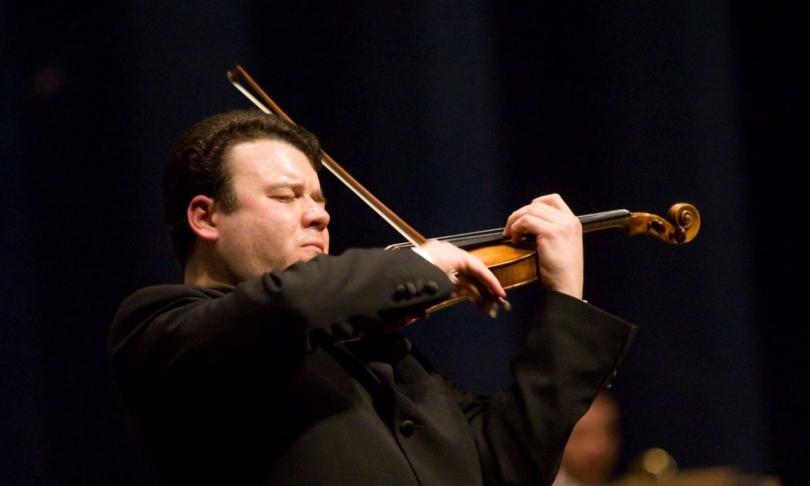
Vadim Guzman, the Israeli violinist who was born in Ukraine and who spent his first years with the violin - the young Vadim already picked up the queen among the string instruments at the tender age of seven - among others in the violin class of Zakhar Bron, has gained an exorbitant reputation over the years as an interpreter of the very first order. Among the increasing number of violinists on the classical scene today, he stands out as a deeply serious musician with an enormous technique at his disposal, which he presents not as an end in itself, but as the basis of his musical expression. Vadim Gluzman has the great fortune to be able to play on a Stradivarius violin from 1690, more precisely on the "Ex-Leopold Auer" named after its former owner, the Hungarian violinist Leopold Auer. This magnificent piece is on permanent loan from the Stradivari Society of Chicago.
On his latest album, dedicated to Beethoven and Schnittke, he performs together with the Lucerne Symphony Orchestra under James Gaffigan, who has brought Switzerland's oldest orchestra, which for a long time had played a certain role at best locally and in the context of the annual Lucerne Festival, emphatically into the consciousness of the international orchestral scene with extremely successful recordings over the 10 years he has been chief conductor. For Vadim Gluzman, the American Gaffigan is considered one of his favorite conductors after numerous joint concerts, and he has something of a love affair with the Lucerne Orchestra. Indeed, making music together on this album proves to be a special stroke of luck.
In the Beethoven concerto, Gluzman's full Russian-school violin tone contrasts with the Lucerne Orchestra's sharpened chamber-music style of playing. Listening is exactly what the violinist has to say about this concerto: "For me, the Violin Concerto is one of the most lyrical works Beethoven ever wrote, and yet the power of the spirit is always present and evident. His sense of structure, the perfect architectural balance is at its peak, it only enhances the soaring lyricism and the highly human voice of the melodic essence that never fails to touch the heart."
This recording of the Beethoven Concerto is connected with Schnittke and thus also with his Violin Concerto by solo cadenzas which Schnittke wrote for Gidon Kremer in the mid-seventies and which at the time caused many a tumult but also enthusiasm in concert halls because of their abstract modernity. In the meantime, it has become quite quiet about these interjections of Schnittke into the Beethoven concerto. It is all the more interesting and important that Vadim Gluzman has chosen these cadenzas.
It should come as no real surprise that the cadenza plays a prominent role in Schnittke's concerto. Thus, the work begins with an extended cadenza that is eventually accompanied by winds. The first movement then proceeds almost as a violin solo with skeletal orchestral interjections. It is not until the second movement, during which a veritable string quartet also makes its presence felt, that there is real concertizing, a give-and-take between violin and orchestra. The finale fully displays Schnittke's highly individualistic, polystylistic compositional art, recalling Schubert and Mahler as well as Russian Orthodox chants. Violinist and orchestra move in the sometimes-scurrilous tonal world of Schnittke like fish in water.
This album lives from the unusual contrast of the two so different compositions as well as from the violinist's art of interpretation and his perfect interplay with the orchestra, whose conductor plays a decisive role in the success of the Beethoven-Schnittke project.
Vadim Gluzman, violin
Luzerner Sinfonieorchester
James Gaffigan, conductor









